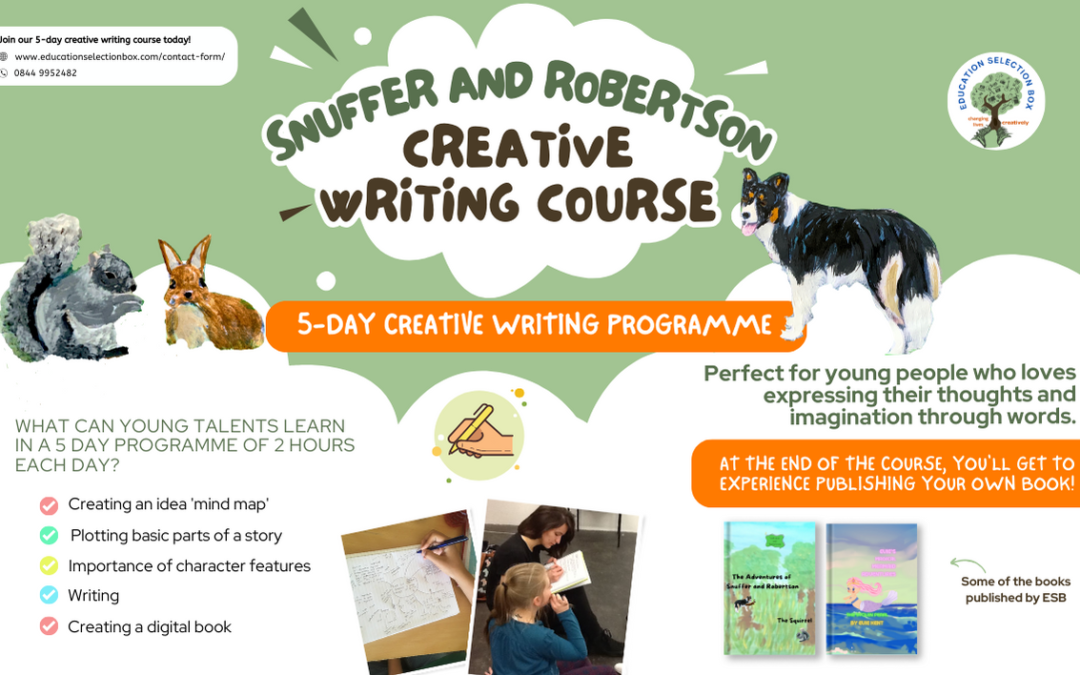
by Helen Kenworthy | Apr 30, 2024 | Education
In the realm of education, the journey to mastering Maths and English is a multifaceted one, requiring a blend of effective teaching methods, engaging strategies, and insightful assessments. This article aims to provide a comprehensive guide to teaching Maths and English, focusing on various teaching methods, strategies for engaging students, and tips for assessing progress. Whether you’re a seasoned educator or a newcomer to the field, this guide will offer valuable insights and practical advice to enhance your teaching approach.
Understanding the Learner
The first step in mastering Maths and English lies in understanding the learner. As highlighted by the EDC, teachers must be aware of the wide array of experiences and needs of each student, especially those who are English learners (ELs)
This understanding is crucial for providing appropriate support tailored to each student’s strengths and needs. For instance, teachers should inquire about students’ English-language proficiency levels and consider their educational backgrounds. This information helps in tailoring lessons to meet the unique needs of each student, ensuring that all students, including those who are ELs, can engage deeply in learning
Engaging Students with Challenging Tasks
Engaging students with challenging mathematics tasks is a key strategy for improving all students’ learning and achievement. This approach not only stimulates intellectual curiosity but also fosters a deeper understanding of mathematical concepts. By presenting students with complex problems that require critical thinking and problem-solving skills, teachers can help students develop a strong foundation in mathematics. This strategy is particularly beneficial for EL students, who may need additional support to fully participate in classroom mathematical discourse
Maths Challenges
- Problem-Solving Puzzles: Introduce students to complex puzzles that require logical reasoning and problem-solving skills. These can range from simple logic puzzles to more complex ones that involve geometry, algebra, or statistics.
- Real-World Problems: Incorporate real-world problems into your lessons. For example, you could use a budgeting scenario to teach students about percentages, or a traffic flow problem to introduce them to ratios and proportions.
- Mathematical Modeling: Have students create models to represent mathematical concepts. This could involve using physical objects, digital simulations, or even graph paper to model concepts like fractions, decimals, or geometric shapes.
- Mathematical Storytelling: Encourage students to create stories that incorporate mathematical concepts. This can help them understand the practical applications of math and improve their storytelling skills.
- Mathematical Games: Incorporate games that require mathematical skills into your lessons. This could include games that involve strategy, probability, or geometry.
English Challenges
- Creative Writing Prompts: Provide students with creative writing prompts that require them to think critically about their writing. This could involve writing a story from a character’s perspective, creating a dialogue between two characters, or writing a persuasive essay.
- Debate Topics: Introduce students to a variety of debate topics that require them to research, analyze, and present their arguments. This can help them develop their research skills and improve their public speaking abilities.
- Poetry and Rhyming: Encourage students to write poetry or create rhymes that incorporate mathematical concepts or English language patterns. This can help them appreciate the beauty and complexity of language.
- Language Exploration: Have students explore different languages or dialects and analyze how they differ from English. This can help them understand the richness and diversity of the English language.
- Public Speaking Challenges: Organize public speaking challenges where students have to present a topic of their choice. This can help them develop their speaking skills and learn to articulate their thoughts clearly.
By incorporating these challenging tasks into your Maths and English lessons, you can create a dynamic and engaging learning environment that motivates students to explore and understand these subjects more deeply.
Supporting Language Development in Mathematics
Supporting the development of students’ language in mathematics is another essential strategy. This involves integrating both productive and receptive language into mathematics lessons. Productive language refers to the use of language in creating messages, while receptive language involves understanding and responding to messages. By incorporating these forms of language into lessons, teachers can ensure that students are not only learning mathematical concepts but also improving their language skills. This dual approach is particularly important for EL students, who may benefit from visual aids, acting out problems, and using sentence starters to scaffold their explanations
Employing Multimodal Representation or Communication
Multimodal representation or communication involves using a combination of speaking, writing, diagramming, gesturing, and other forms of communication to convey mathematical concepts. This strategy can significantly enhance students’ understanding and retention of mathematical information. For example, using pictures or diagrams to illustrate mathematical problems can make abstract concepts more accessible to students. Moreover, encouraging students to explain their mathematical thinking through speaking, writing, or gesturing can deepen their understanding of the subject matter
Classroom Management Techniques
Effective classroom management is crucial for creating a conducive learning environment. This involves setting clear expectations, maintaining discipline, and ensuring that all students have the opportunity to participate in class discussions. Teachers can employ various classroom management techniques, such as using visual aids, creating a positive learning environment, and providing individualized feedback to students. These strategies can help in maintaining student engagement and ensuring that all students, regardless of their proficiency level, feel valued and supported
Assessing Progress and Adjusting Strategies
Assessing progress is a critical component of teaching Maths and English. Teachers should regularly evaluate students’ understanding and application of mathematical concepts and language skills. This can be done through formative assessments, such as quizzes and in-class activities, as well as summative assessments, like tests and projects. By analyzing these assessments, teachers can identify areas where students may need additional support and adjust their teaching strategies accordingly. This ongoing evaluation ensures that teaching methods remain effective and responsive to the needs of the students.
Conclusion
Mastering Maths and English requires a holistic approach that combines effective teaching methods, engaging strategies, and insightful assessments. By understanding the learner, engaging students with challenging tasks, supporting language development, employing multimodal representation, and employing effective classroom management techniques, teachers can create a dynamic and supportive learning environment. Regular assessment and adjustment of teaching strategies ensure that all students, including those who are English learners, can achieve success in their mathematical and language learning journeys.
In conclusion, the journey to mastering Maths and English is a rewarding one, filled with opportunities for growth and learning. By embracing the strategies outlined in this guide, educators can create a nurturing and effective learning environment that empowers students to reach their full potential.

by Helen Kenworthy | Apr 24, 2024 | Uncategorized
Tutors bridge the gap between students and their academic goals, providing personalized attention and support that often goes beyond the traditional classroom setting. At Education Selection Box, we believe that any child can enjoy learning with the right support, and we’re here to celebrate the contributions of tutors in the education sector.
This blog post is a tribute to the excellence in education, highlighting the role of tutors in shaping the future of our students.
Defining the Role of Tutors
Tutors are the backbone of personalized learning, offering a one-on-one approach that traditional classroom settings cannot match. They provide students with the flexibility to learn at their own pace, addressing specific areas of difficulty and enhancing understanding through tailored instruction.
Strategies for Success
Successful tutors employ a variety of strategies to engage their students and foster a love for learning. These include:
- Effective Communication: Building a strong rapport with students, understanding their learning style, and adapting instruction to meet their needs.
- Setting Realistic Expectations: Helping students set achievable goals and providing constructive feedback to keep them motivated.
- Fostering a Love for Learning: Encouraging curiosity and a passion for knowledge, guiding students to explore their interests and discover new passions.
The Role of Tutors in Preparing Students for the Future
1. Career Preparation
Tutors play a crucial role in preparing students for their future careers. They provide students with the skills and knowledge needed to succeed in the workforce, ensuring they are well-equipped to navigate the professional world.
2. Personal Development
Beyond academic achievements, tutors contribute significantly to students’ personal development. They help build confidence, resilience, and a positive attitude towards learning, equipping students with the tools to face life’s challenges head-on.
3. Community Impact
Tutors also make a difference in their communities, not just through their work with students but also through their broader contributions to education. They often volunteer their time to mentor younger students, share their expertise, and inspire the next generation of learners.
4. Promoting Personal Development
Tutors play a pivotal role in promoting personal development among students. By acting as leaders, tutors help students build confidence, develop resilience, improve problem-solving and decision-making skills, and manage stress effectively. They guide students in setting personal goals, encourage them to overcome obstacles, and instill in them a sense of responsibility and accountability. This leadership role is crucial in shaping students’ future success, as it equips them with the essential life skills needed to navigate future challenges and opportunities 1.
5. Shaping Future Success
The leadership role of tutors is instrumental in shaping students’ future success. By nurturing essential life skills, tutors help students prepare for future challenges and opportunities. Students who have been guided by tutor-leaders are often better equipped to navigate college, careers, and life transitions. This holistic approach ensures that students are not only academically prepared but also emotionally and socially equipped to face the demands of the real world 1.
6. Holistic Development of Students
Tutors play an instrumental role in the holistic development of students. Beyond imparting academic knowledge, they guide students in developing essential life skills such as critical thinking, problem-solving, time management, and effective communication. They help students identify their strengths and weaknesses, work on their areas of improvement, and enhance their self-confidence and self-awareness. Thus, the role of a tutor encompasses more than teaching subjects; it involves shaping well-rounded individuals who are prepared for life’s challenges
Strategies for Tutors to Enhance Their Leadership Role
Tutors can significantly influence the lives of their students by embracing their role as leaders. By adopting certain strategies, tutors can enhance their leadership abilities and maximize their impact on students’ academic, personal, and future success. These strategies include:
- Fostering a Positive Learning Environment: Tutors can create a supportive and motivating learning environment that encourages students to explore their interests and develop a love for learning.
- Personalized Instruction: Tailoring instruction to meet the unique needs and learning styles of each student can significantly enhance their understanding and retention of information.
- Regular Feedback and Assessment: Providing constructive feedback and regular assessments can help students set achievable goals and stay motivated.
- Encouraging Independent Learning: Encouraging students to take initiative in their learning can foster a sense of responsibility and accountability, preparing them for future challenges
Conclusion
In conclusion, tutors are the unsung heroes of education, playing a pivotal role in shaping the future of our students. Their dedication, passion, and commitment to excellence in education are what truly make a difference. As we continue to navigate the evolving landscape of education, let’s take a moment to recognize and celebrate the incredible work of tutors everywhere. Together, we can ensure that every child has the opportunity to enjoy learning and achieve their full potential.

by Helen Kenworthy | Apr 16, 2024 | Uncategorized
Storybooks are a treasured part of a child’s early years, offering a magical window into a world of imagination, learning, and growth. Whether you’re a parent looking to enrich your child’s early years or an educator seeking innovative ways to engage your students, this guide will equip you with the knowledge and tools to make storybooks a central part of your child’s learning experience
This week’s blog post aims to provide parents and educators with insights into the benefits of reading storybooks to children, tips on selecting age-appropriate storybooks, and strategies for encouraging creativity through storybooks.
Benefits of Reading Storybooks to Children
Reading storybooks to children is a fundamental part of their development. Here are some of the key benefits:
1. Enhances Language Skills
Storybooks help children develop their language skills. They learn new words, understand sentence structure, and improve their vocabulary. Reading aloud also helps in pronunciation and comprehension.
2. Fosters Emotional Intelligence
Through stories, children learn about a wide range of emotions and how to express them. Storybooks teach empathy, kindness, and the importance of understanding others’ feelings.
3. Encourages Imagination and Creativity
Storybooks ignite children’s imagination, encouraging them to visualize the stories and create their own narratives. This process enhances their creativity and problem-solving skills.
4. Develops Social Skills
Reading stories together as a family can strengthen social bonds. It teaches children about sharing, taking turns, and the importance of listening to others.
5. Introduces Basic Concepts
Early storybooks often include simple concepts like numbers, colors, and shapes. This foundational knowledge lays the groundwork for future learning.
Selecting Age-Appropriate Storybooks
Choosing the right storybook is crucial for a child’s development. Here are some tips for selecting age-appropriate storybooks:
1. Consider the Child’s Developmental Stage
Different ages require different types of stories. For toddlers, choose simple, rhymed stories with bright colors. As children grow, introduce stories with more complex themes and vocabulary.
2. Look for High-Quality Illustrations
Illustrations play a significant role in a child’s understanding and enjoyment of a story. Look for books with vibrant, engaging illustrations that complement the text.
3. Read Reviews and Recommendations
Parents and educators often share their favorite storybooks. Reading reviews and recommendations can help you discover age-appropriate books that are both educational and enjoyable.
4. Consider the Theme and Content
Choose stories that align with your child’s interests and values. Avoid stories with themes that are inappropriate for their age.
Encouraging Creativity Through Storybooks
Storybooks are not just about entertainment; they are a powerful tool for fostering creativity. Here are some strategies:
1. Engage in Discussion
After reading a storybook, engage your child in a discussion about the story. Ask them what they liked, what they didn’t like, and what they would change. This encourages critical thinking and creativity.
2. Draw and Create
Encourage your child to draw or create their own versions of the stories they love. This can be as simple as doodling on a piece of paper or creating a puppet show based on the story.
3. Write Their Own Stories
Help your child write their own stories, incorporating elements from the storybooks they’ve enjoyed. This can be a fun way to practice writing skills and express their creativity.
4. Role-Play
Role-playing stories can be a fantastic way to encourage creativity. Children can act out the stories, creating their own versions and adding new characters or plot twists.
Conclusion
Storybooks are a vital tool in a child’s development, offering countless benefits from enhancing language skills to fostering creativity. By selecting age-appropriate storybooks and engaging in creative activities, parents and educators can support their children’s growth in a fun and engaging way. Remember, the most important thing is to make the reading experience enjoyable and interactive, creating a love for stories that will last a lifetime
You can order our Snuffer and Robertson paperback on Amazon or the e-book version here

by Helen Kenworthy | Apr 10, 2024 | Education, Resources, Uncategorized
Welcome to our journey through the enchanting world of “Snuffer & Robertson,” a delightful children’s book that transports readers into the heart of a friendship between a wise old collie dog named Robertson and a playful rabbit named Snuffer. This blog will take you on a tour of the book’s captivating story, its beautiful illustrations, and why it’s a must-read for every child aged 3 to 8.
Background of “Snuffer & Robertson”
“Snuffer & Robertson” is the first in a series of books that celebrate friendship, acceptance of differences, and the joy of adventure. Written by Helen and Val Lewis, a mother-daughter duo with a wealth of experience in working with young children, this book is not just a story but a journey of discovery and learning. The story of Snuffer and Robertson is inspired by the friendship between Robertson, a collie dog, and Freddie, a much-loved furry member of the Lewis family.
The Art and Design of “Snuffer & Robertson”
The book’s illustrations are hand-drawn, showcasing the unique art style of Helen and Val Lewis. The designs are vibrant and engaging, with a focus on the characters’ expressions and the lush, woodland setting that serves as their playground. The layout is designed to encourage reading together, with lines split into two colors for easy reading by younger children, and sentences of varying difficulty to challenge and engage readers of all ages.
Why Every Kid Should Read “Snuffer & Robertson”
- “Snuffer & Robertson” is more than just a children’s book; it’s a tool for learning and growth. The story, filled with rhymes and adventures, is written with simple sentences, making it accessible for young readers to read on their own.
- It encourages children to practice different tenses, explore new words, and engage in discussions about language structures.
- The book also supports the work of the RYTC (Really Youthful Theatre Company) and Education Selection Box, contributing to children’s art and drama therapy charities in the West Midlands.
Reader Recommendations
For children aged 3 to 8, “Snuffer & Robertson” is a perfect blend of fun, learning, and emotional connection. Whether you’re reading it together, by yourself, or with a parent, this book is sure to captivate and inspire.
To further explore the themes and lessons in the book, consider enrolling in the RYTC Drama Course or the Education Selection Box Creative Writing Course.
Conclusion
“Snuffer & Robertson” is a testament to the power of storytelling in education. It’s a book that not only entertains but also encourages children to reach their full potential. Whether you’re a parent looking for a book to share with your child or a teacher seeking resources for your classroom, “Snuffer & Robertson” is a gem worth discovering.
Where to Purchase
You can order the paperback on Amazon or the e-book version here

by Helen Kenworthy | Apr 2, 2024 | Education
Hello, high schoolers! Today, we’re diving into a topic that might seem a bit intimidating at first glance, but trust me, it’s going to be a game-changer. We’re going to explore “Mathematics Beyond the Textbook: Real-World Applications for High Schoolers.” This isn’t just about solving equations or memorizing formulas; it’s about understanding how math is everywhere around us, in our daily lives, and how it can help us solve real-world problems.
Why is Mathematics Important?
Before we dive into the applications, let’s take a moment to appreciate the beauty and importance of mathematics. Mathematics is the language of the universe. It’s the foundation of everything from the architecture of buildings to the algorithms that power our smartphones. It’s the tool that allows us to predict weather patterns, calculate the trajectory of a rocket, and even understand the complexities of the human brain.
But why is it so important for high schoolers? Well, for one, a solid understanding of mathematics can open up a world of opportunities. Whether you’re aiming for a career in engineering, finance, or even a career in the arts, a strong foundation in math can give you an edge. It’s not just about getting good grades; it’s about understanding the world around you and how you can make a difference.
Real-World Applications of Mathematics
Now, let’s get into the nitty-gritty. Here are some real-world applications of mathematics that you might find surprising:
1. Navigation and GPS
Have you ever wondered how your phone knows where you are? That’s thanks to mathematics. GPS systems use complex equations to calculate your position based on the time it takes for a signal to travel from the satellite to your phone. Without math, we wouldn’t be able to navigate the world with ease.
2. Cryptography
Imagine a world where your emails and messages are completely secure. That’s possible thanks to cryptography, a field of mathematics that involves creating codes to encrypt and decrypt messages. This is how your online banking information is protected.
3. Climate Modeling
Climate change is a pressing issue, and mathematicians are at the forefront of understanding and predicting its effects. By using mathematical models, scientists can predict future climate patterns and help us develop strategies to mitigate the impact.
4. Sports Analytics
From predicting the outcome of a game to analyzing player performance, sports analytics relies heavily on mathematics. Data scientists use statistical models to make predictions and decisions, helping teams and players improve.
5. Financial Markets
The stock market is a complex system that relies on mathematical models to predict future trends. These models help investors make informed decisions, and they’re crucial for the economy as a whole.
Conclusion
As high schoolers, you might not see the direct application of math in your daily life right now. But trust me, it’s there. Every time you use a smartphone, drive a car, or even when you’re planning your college courses, you’re using math. And the more you understand it, the more you’ll see its impact on the world around you.
So, let’s embrace mathematics not just as a subject to be studied, but as a tool to understand and shape the world. After all, math is the language of the universe, and it’s up to us to learn and speak it.
Remember, the key to mastering math is not just memorizing formulas but understanding the principles behind them. So, keep exploring, keep asking questions, and keep learning. Because the world of mathematics is vast, and there’s so much more to discover.
Happy learning, and may your journey through math be as exciting and rewarding as it is enlightening!





